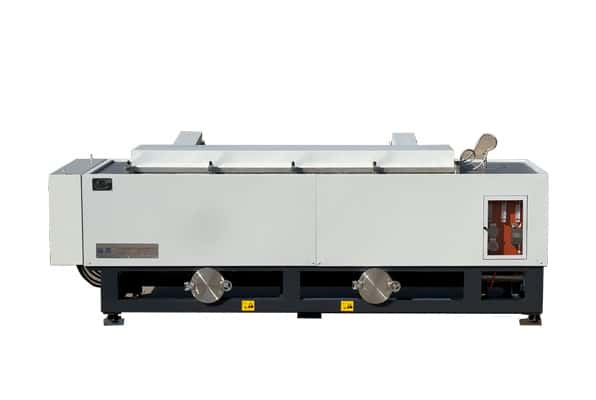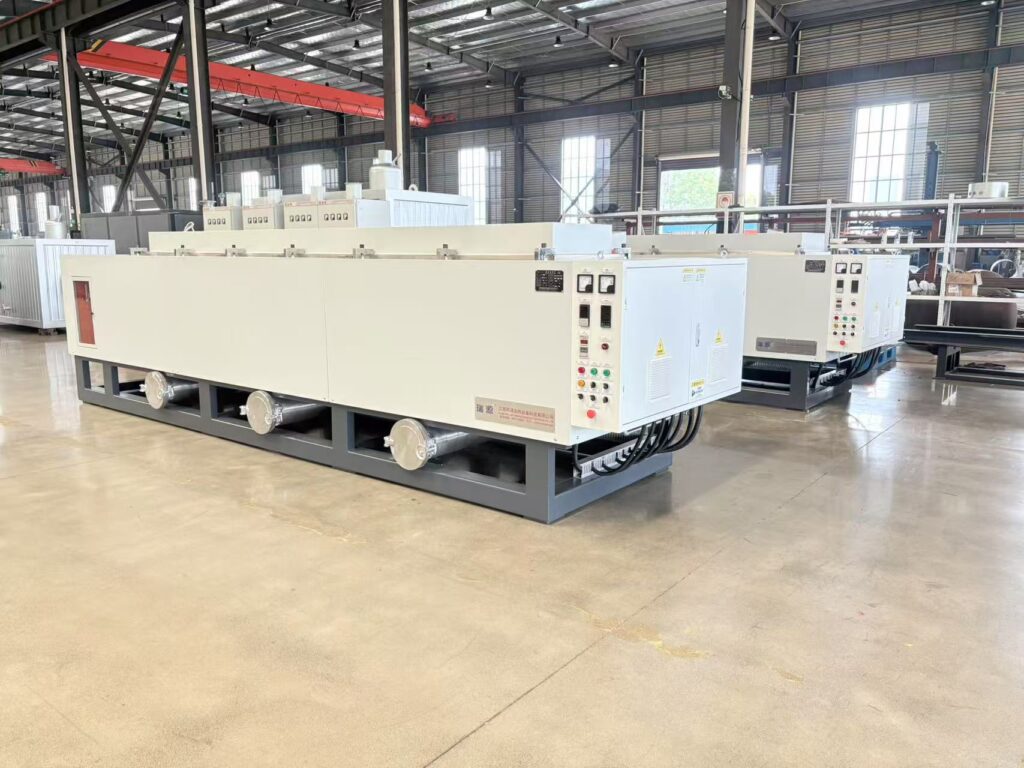The cabinet cleaning furnace,https://8ruiyan.com/en/all-vacuum-cleaning-furnaces/as a specialized cleaning device, plays a vital role in polymer processing.

1. Overview of Cabinet Cleaning Furnaces
A cabinet cleaning furnace is a closed pyrolysis cleaning device specifically designed for cleaning polymer products, molds, and components. It utilizes high-temperature pyrolysis to break down polymer residues into gases and small molecules, achieving pollution-free, high-efficiency cleaning.
Compared to traditional chemical cleaning or mechanical grinding, cabinet cleaning furnaces offer the following advantages:
- Thorough cleaning, reaching micron-level cleanliness
- No chemical solvents, environmentally friendly and safe
- Capable of handling complex geometries
- Simple operation and low maintenance costs
2. Equipment Structure Analysis
The cabinet cleaning furnace typically consists of the following core components:
- Furnace Body: Double-layered stainless steel structure, filled with thermal insulation material in between.
- Heating System: Uses electric heating elements , with an adjustable temperature range of 200–600°C.
- Air Circulation System: Equipped with a high-power fan to ensure uniform temperature distribution inside the furnace (temperature deviation ≤ ±5°C).
- Control System: PLC-based intelligent control panel .
- Safety System: Includes over-temperature protection, pressure balance valves, etc.
3. Suitable Cleaning Objects
Cabinet cleaning furnaces are particularly suitable for processing the following polymer materials and related equipment:
- Injection Molds:
- Removing residues of PP, PE, ABS, PC, and other plastics
- Cleaning cured residues from silicone molds
- Extrusion Equipment Components:
- Polymer carbon buildup on screws and dies
- Melt residues on filter screens and breaker plates
- Rubber Product Manufacturing Equipment:
- Rubber residues on vulcanization molds
- Adhesives on mixer components
- Not suitable for: Fluoropolymers (e.g., PTFE), certain thermosetting resins, and metal parts (may cause oxidation).
4. Installation Requirements
To ensure safe operation, the installation of a cabinet cleaning furnace must meet the following conditions:
1. Site Requirements
- Floor load capacity: ≥500 kg/m²
- Space dimensions: ≥80 cm of clearance around the device for maintenance
- Ventilation: Recommended exhaust system (airflow ≥2000 m³/h)
2. Utility Requirements
- Power Supply:
- 220V/380V (depending on model)
- Power range: 15–60 kW
- Dedicated circuit, preferably with a voltage stabilizer
- Compressed Air: 0.6–0.8 MPa (for pneumatic doors and cooling systems)
3. Environmental Requirements
- Ambient temperature: 5–40°C
- Relative humidity: ≤80% RH
- Avoid flammable or explosive environments
5. Simulated Operation Process
1. Preparations
- Check the status of all systems
- Wear heat-resistant gloves and protective masks
- Prepare workpieces for cleaning (remove large residues mechanically in advance)
2. Operating Steps
- Open the furnace door and evenly place workpieces on the material rack.
- Close and securely lock the door (ensure proper sealing).
- Set cleaning parameters on the control panel:
- Temperature: Adjust based on material (common polymer cleaning temperatures):
- PP/PE: 350–400°C
- ABS/PC: 400–450°C
- Rubber: 450–500°C
- Time: Typically 2–6 hours (depending on contamination level).
- Heating rate: Recommended ≤10°C/min.
- Temperature: Adjust based on material (common polymer cleaning temperatures):
- Start the cleaning program; the system operates automatically.
- After completion, allow natural cooling to <80°C before opening the door.
- Remove workpieces and inspect cleaning results.
3. Cleaning Effectiveness Evaluation
- Visual inspection: No visible residues on the surface.
- White cloth test: Wipe with a clean white cloth—no contamination.
6. Key Precautions
1. Safe Operation
- Do not exceed temperature limits: Never operate above the rated maximum temperature.
- Avoid mixed cleaning: Different polymers should be processed separately (may produce harmful gases).
- Personal protection: Always wear protective gear during high-temperature operations.
- Emergency preparedness: Keep fire extinguishers on-site.
2. Maintenance
- Daily: Check door seals and clean filters.
- Weekly: Calibrate temperature sensors and inspect heating elements.
- Monthly: Clean the furnace chamber and test safety devices.
- Annually: Full inspection and replacement of worn parts.
3. Troubleshooting
- Temperature anomalies: Check thermocouples and solid-state relays.
- Door seal leaks: Adjust door pressure or replace seals.
7.Successful Case
In June 2025, our company successfully delivered two customized cabinet cleaning furnaces to a renowned Argentine enterprise for removing polymer residues from injection molds and rubber vulcanization molds. The client had extremely high requirements for mold cleanliness, which traditional chemical cleaning methods could no longer meet in terms of both environmental compliance and operational efficiency.

For technical inquiries, contact Ruiyuan’s official support team!
📞 📞 📞
Whatsapp:86-19106101570
wechat:86-19106101570
email:nieyili@cnryan.com
